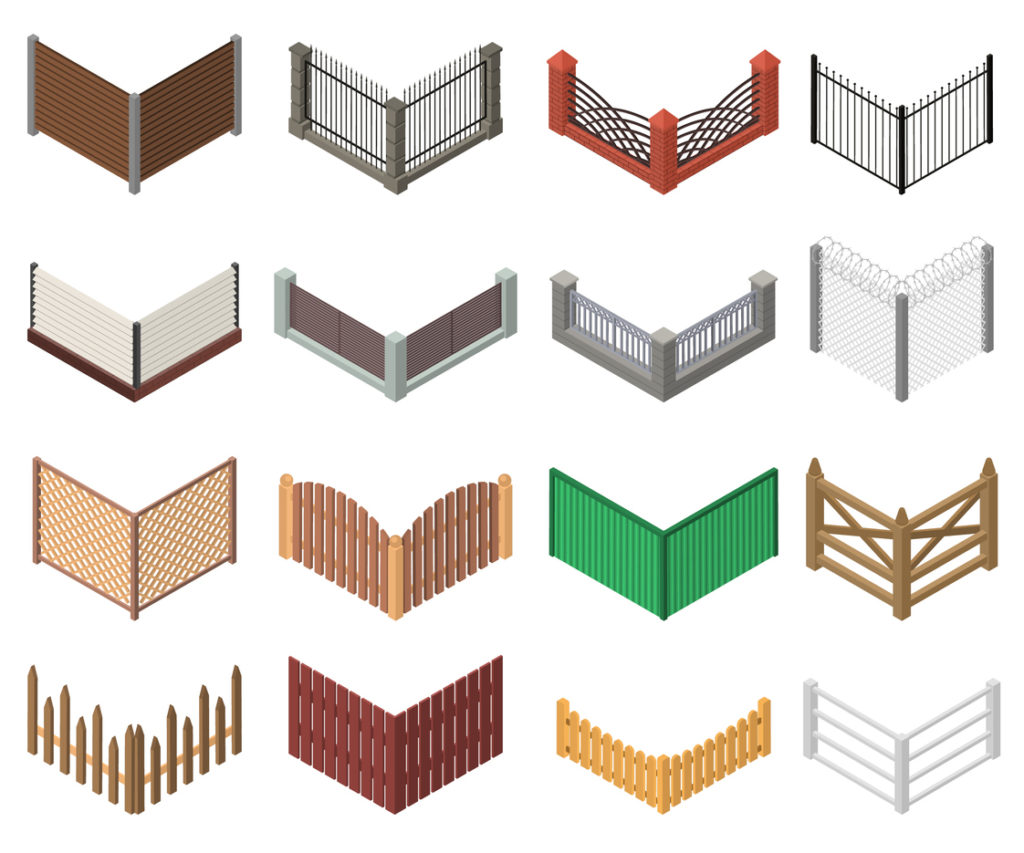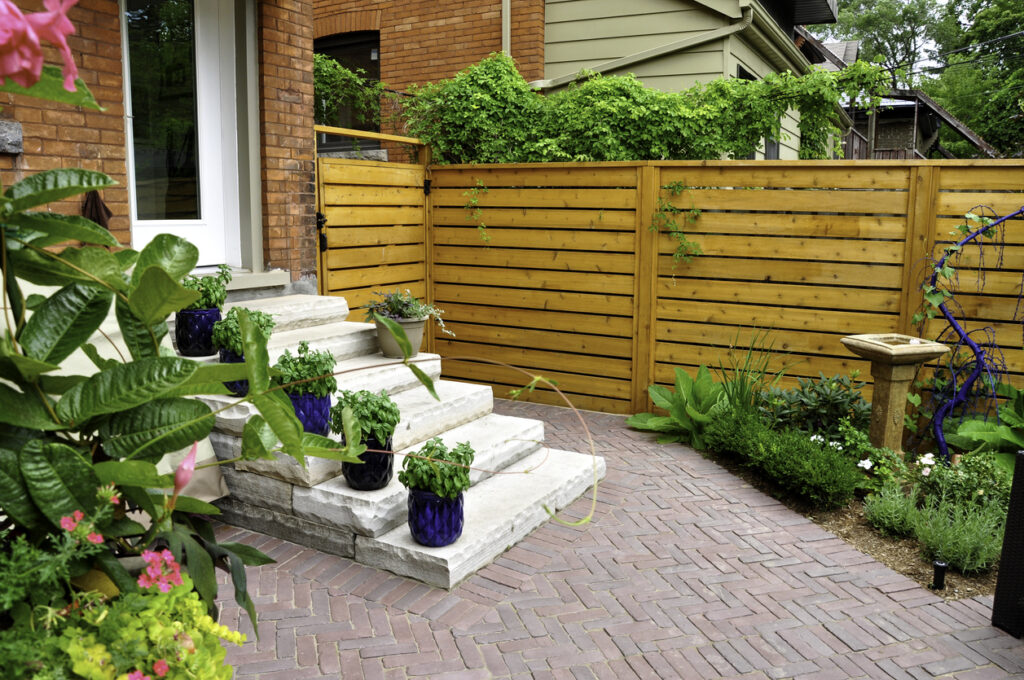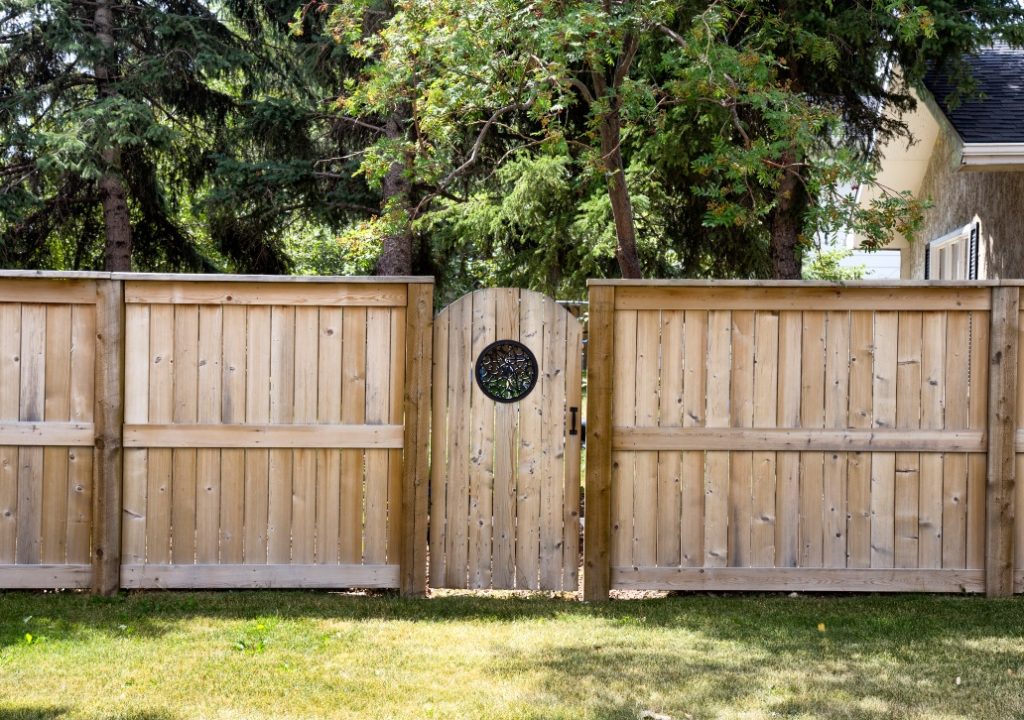Because of its natural beauty, durability, and versatility, wood is one of the most popular fencing materials. Wood fences require relatively little upkeep and can be painted or stained in a variety of colors to match your preferences.
The Advantages and Disadvantages of Wood Fences
Advantages:
Affordable. Treated wood is usually one of the most cost-effective fence materials available.
Attractive. The wood’s inherent grain has a charm that can be enhanced with different stain colors.
Works in a variety of climates. Because the wood has been treated, it’s moisture-resistant and won’t be harmed by dry air.
Disadvantages:
Wood will gradually rot. Even treated wood has a limited lifespan and will eventually succumb to the impacts of moisture, sunlight, cold, and heat.
Wood can warp over time. Thick fence posts generally retain their shape, but wood fence panels are thinner and can warp or bend out of shape over time.
Purposes and Applications for Fences
Before investing in a fence, identify what your needs are. For example, a fence intended to contain and protect livestock and other animals will differ greatly from a privacy fence.
Fences can serve a number of purposes, including:
- Privacy
- Security
- Aesthetics
- Defining your property’s boundaries
- Providing a safe area for pets and children
- Enclosing “attractive nuisances” such as pools, trampolines, or dumpsters out of the view of neighbors
The best type of wood for your fence will depend on its purpose. You may want to increase privacy, keep pets inside your yard, or add security to your home. Or maybe you simply like the rustic appearance of split rail fences or a white picket fence’s clean and classic look.
Available Styles and Variations
Privacy fences can be constructed in a traditional or contemporary style. Traditional privacy fencing can be constructed from stockade or picket fencing, while contemporary privacy fence styles might feature board-on-board construction or shadowboxing.
Rail fences create a distinctive rustic style, while picket fences lend a traditional feeling to commercial applications.
Composite Materials
Fences can be constructed of composite materials rather than wood.
- Some vinyl and aluminum fences mimic the look of natural wood. These types of fences require little to no maintenance.
- Composite fences resemble wood but are made with recycled materials, such as plastic bottles and reclaimed wood fibers. They usually cost more than traditional wooden fences but offer many advantages, including a longer lifespan and fewer maintenance requirements. Composite fencing may also be more durable in certain weather conditions because it doesn’t rot or rust.
Ready to Get Started?
Some fences are used primarily for privacy, some for protection, and others purely for aesthetics. Many wood fencing options are available depending on your needs and personal taste.
When looking at fencing materials, always keep in mind the purpose of the fence, the maintenance requirements of the materials, and the overall aesthetics. Your choice will affect the level of privacy and security the fence provides, the value of your home, and how much time and money you spend on upkeep.
All materials used by Anderson Fence are top quality from trusted suppliers. With 50+ years in the fencing business, we have the knowledge and experience necessary to give you a fence you can be proud of.
Call Anderson Fence today at (800) 722-0929 for a free estimate, or contact us and we will be in touch as soon as possible.



